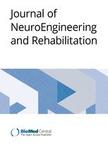版权所有:内蒙古大学图书馆 技术提供:维普资讯• 智图
内蒙古自治区呼和浩特市赛罕区大学西街235号 邮编: 010021

作者机构:Singapore Inst Technol Hlth & Social Sci Cluster Singapore Singapore Univ Minnesota Sch Kinesiol Human Sensorimotor Control Lab Minneapolis MN USA Ist Italiano Tecnol Dept Robot Brain & Cognit Sci Genoa Italy Univ Minnesota Dept Neurol Minneapolis MN 55455 USA Univ Minnesota Sch Publ Hlth Minneapolis MN USA Scuola Super StAnna BioRobot Inst Pisa Italy Scuola Super StAnna Dept Excellence Robot & AI Pisa Italy Heidelberg Univ Inst Tech Informat Heidelberg Germany
出 版 物:《JOURNAL OF NEUROENGINEERING AND REHABILITATION》 (神经康复杂志)
年 卷 期:2021年第18卷第1期
页 面:77-77页
核心收录:
学科分类:0831[工学-生物医学工程(可授工学、理学、医学学位)] 1002[医学-临床医学] 1001[医学-基础医学(可授医学、理学学位)] 10[医学]
基 金:NIH Clinical and Translational Science award [UL1TR000114] NIH Research Evaluation and Commercialization Hub award [5U01HL127479-03] Projekt DEAL
主 题:Human Somatosensation Upper limb Rehabilitation Cerebrovascular disease/stroke
摘 要:Background: Proprioceptive deficits after stroke are associated with poor upper limb function, slower motor recovery, and decreased self-care ability. Improving proprioception should enhance motor control in stroke survivors, but current evidence is inconclusive. Thus, this study examined whether a robot-aided somatosensory-based training requiring increasingly accurate active wrist movements improves proprioceptive acuity as well as motor performance in chronic stroke. Methods: Twelve adults with chronic stroke completed a 2-day training (age range: 42-74 years;median time-after-stroke: 12 months;median Fugl-Meyer UE: 65). Retention was assessed at Day 5. Grasping the handle of a wrist-robotic exoskeleton, participants trained to roll a virtual ball to a target through continuous wrist adduction/abduction movements. During training vision was occluded, but participants received real-time, vibro-tactile feedback on their forearm about ball position and speed. Primary outcome was the just-noticeable-difference (JND) wrist position sense threshold as a measure of proprioceptive acuity. Secondary outcomes were spatial error in an untrained wrist tracing task and somatosensory-evoked potentials (SEP) as a neural correlate of proprioceptive function. Ten neurologically-intact adults were recruited to serve as non-stroke controls for matched age, gender and hand dominance (age range: 44 to 79 years;6 women, 4 men). Results: Participants significantly reduced JND thresholds at posttest and retention (Stroke group: pretest: mean: 1.77 degrees [SD: 0.54 degrees] to posttest mean: 1.38 degrees [0.34 degrees];Control group: 1.50 degrees [0.46 degrees] to posttest mean: 1.45 degrees [SD: 0.54 degrees];F[2,37] = 4.54, p = 0.017, eta(2)(p) = 0.20) in both groups. A higher pretest JND threshold was associated with a higher threshold reduction at posttest and retention (r = -0.86, -0.90, p = 0.001) among the stroke participants. Error in the untrained tracing task was reduced by 2